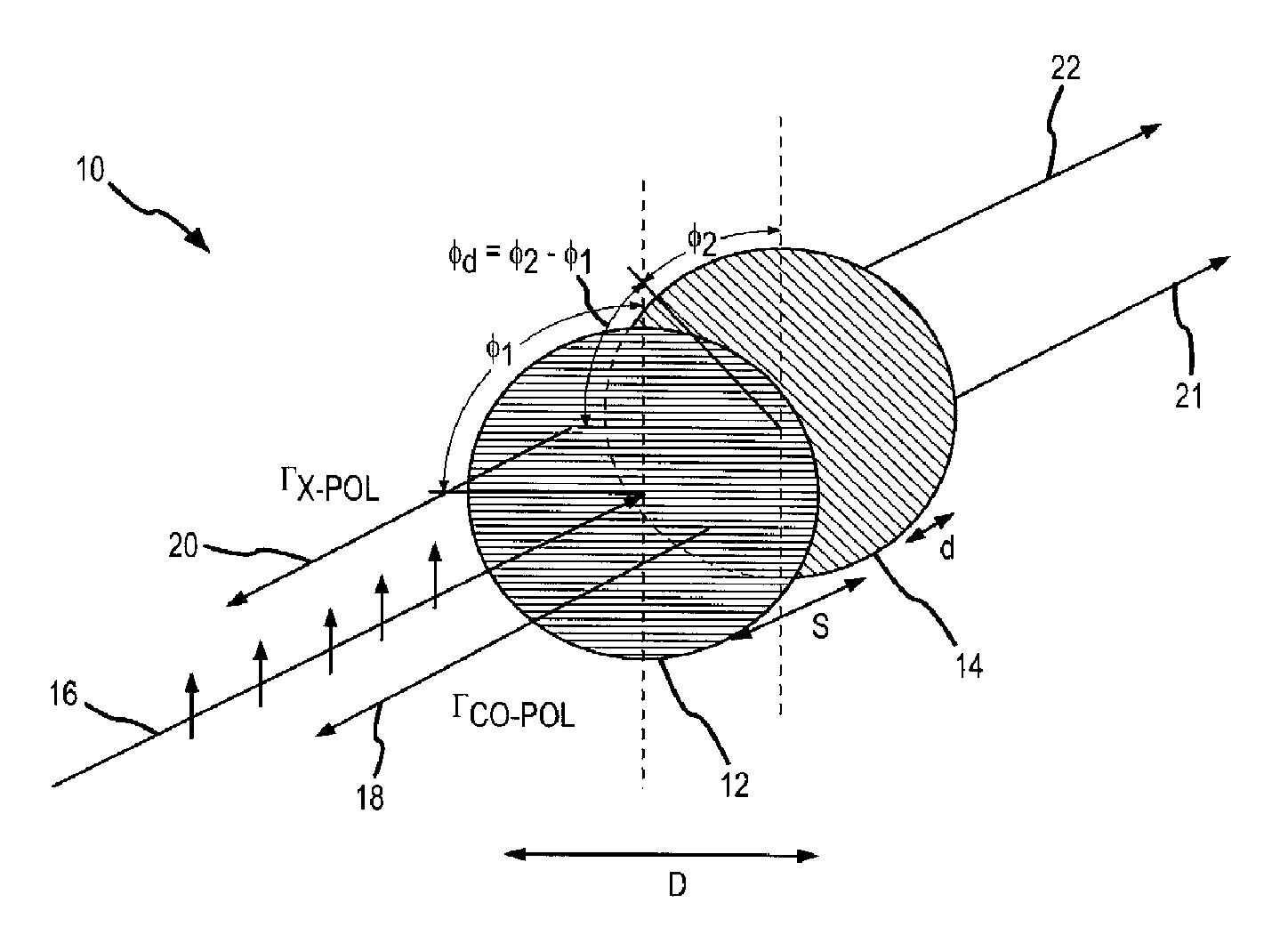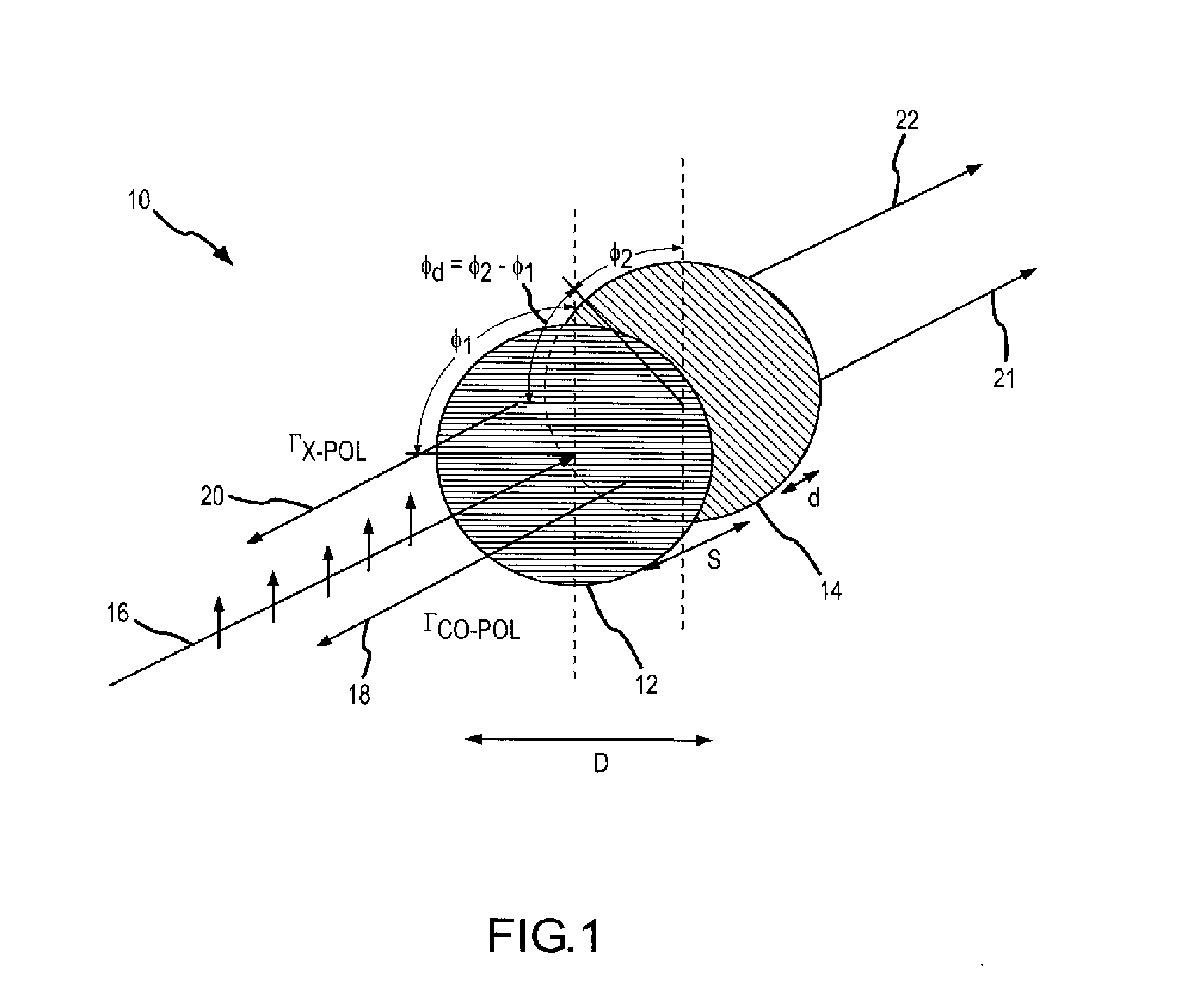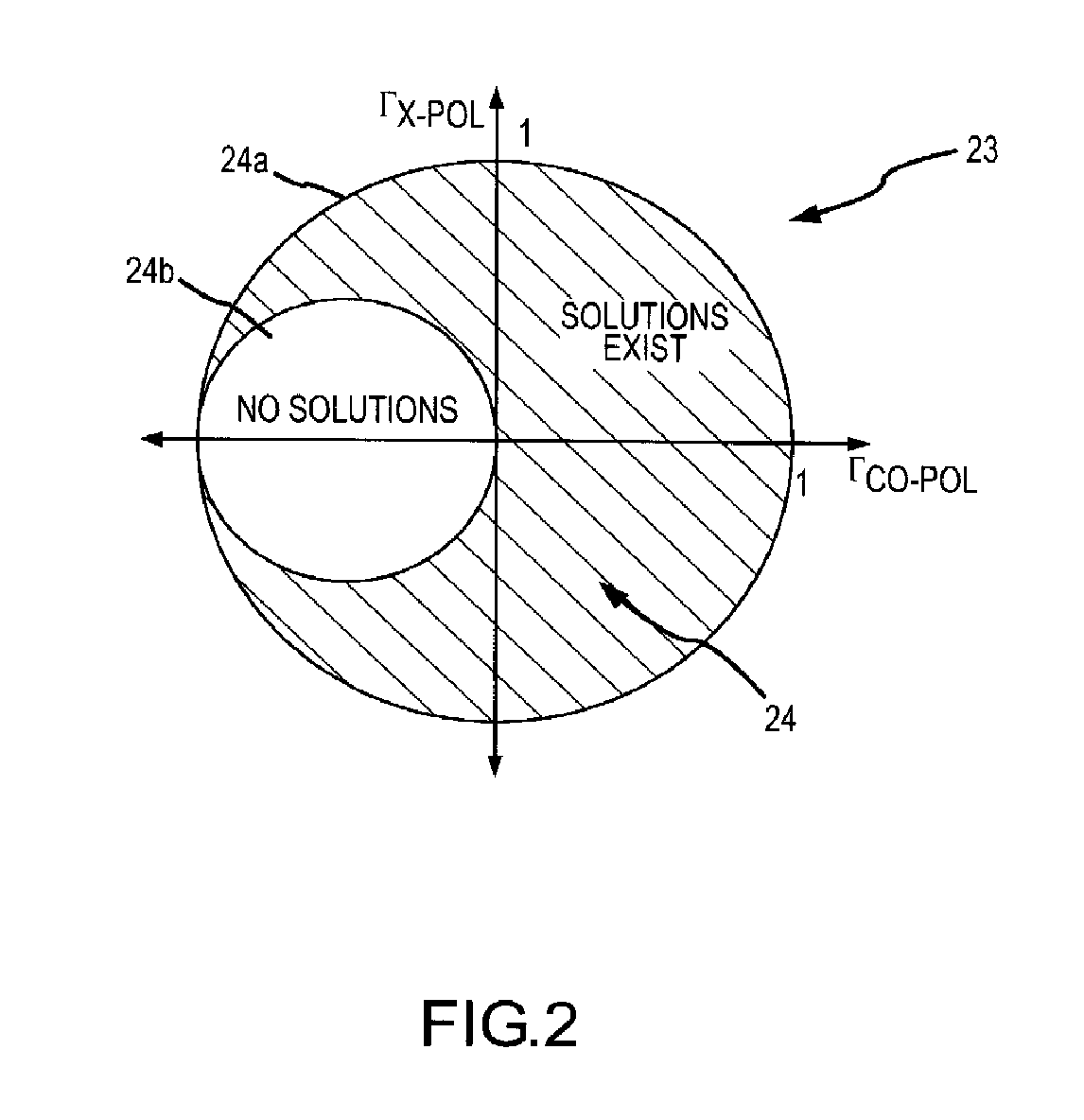Variable Cross-Coupling Partial Reflector and Method
- Summary
- Abstract
- Description
- Claims
- Application Information
AI Technical Summary
Problems solved by technology
Method used
Image
Examples
case 1
co-pol=0
[0030]In this case the first grating is rotated by φ1=cot−1(Γx-pol) and the second grating by an amount
φd=cos-1(cos(2(φ1-π2)))
with respect to the first grating. In accordance with equation 1, φ1 will range from 45° for a maximum value of Γx-pol corresponding to 100% reflection to 90° for a minimum value of Γx-pol corresponding to 0% reflection. More typically, Γx-pol will range for −3 dB (e.g. 50% reflected power) to about −15 dB, e.g. anything less than −20 dB is essentially zero. In accordance with equation 2, φd will range from 90° for maximum x-pol reflection (e.g. 135° from the incident polarization) to 0° for minimum x-pol reflection (e.g. 90° from the incident polarization).
[0031]Another case is where the cross-pal reflected component is nulled.
case 2
x-pol=0
[0032]In this case the first grating is rotated by
φ1=π2
and the second grating by an amount
φd=cos-1(1-Γco1+Γco)
with respect to the first grating. In accordance with equation 1, φ1 is fixed for all values of co-pol reflection. In accordance with equation 2φd will range from 90° for maximum x-pol reflection (e.g. 135° from the incident polarization) to 0° for minimum x-pol reflection (e.g. 90° from the incident polarization).
[0033]The derivation of equations (1) and (2) for the partial reflector is based on the calculation of the scattering matrix for the structure. We assume that the gratings that make up the structure have been designed appropriately so that they only reflect a single Floquet mode, i.e. no grating lobes are generated. This will be the case when the grating tines are spaced less then λ / 2 apart center to center. We also assume that the gratings are designed so that the component polarized along the tines reflects perfectly (in reality there will be a small induc...
PUM
 Login to View More
Login to View More Abstract
Description
Claims
Application Information
 Login to View More
Login to View More - Generate Ideas
- Intellectual Property
- Life Sciences
- Materials
- Tech Scout
- Unparalleled Data Quality
- Higher Quality Content
- 60% Fewer Hallucinations
Browse by: Latest US Patents, China's latest patents, Technical Efficacy Thesaurus, Application Domain, Technology Topic, Popular Technical Reports.
© 2025 PatSnap. All rights reserved.Legal|Privacy policy|Modern Slavery Act Transparency Statement|Sitemap|About US| Contact US: help@patsnap.com



